Introduction
Have you ever felt stressed, anxious, or overwhelmed by the challenges of life? If so, you are not alone. Stress is a common and natural response to situations that threaten our well-being or require adaptation. However, too much stress can have negative effects on our physical and mental health, such as increased blood pressure, heart rate, cortisol levels, inflammation, pain, insomnia, depression, and anxiety.
Fortunately, there are many ways to cope with stress and promote relaxation. One of them is guided imagery meditation, a technique that involves using your imagination to create a mental image of a peaceful and pleasant scene. In this article, we will explore what guided imagery meditation is, how it works, and how it can help you reduce stress and relax.
What is Guided Imagery Meditation?
Guided imagery meditation is a type of focused relaxation or meditation that uses the power of visualization to calm your mind and body. It is also referred to as visualization or directed imagery. Benefits of Guided Imagery Meditation
The basic idea is that your thoughts and emotions can influence your physical state. For example, when you think about a stressful situation, you may feel tense, nervous, or angry. Your body may also react by increasing your heart rate, blood pressure, and muscle tension. On the other hand, when you think about a relaxing situation, you may feel calm, peaceful, or happy. Your body may also respond by lowering your heart rate, blood pressure, and muscle tension.
Guided imagery meditation takes advantage of this mind-body connection by helping you focus your attention on positive and soothing images, sounds, smells, tastes, and sensations. By doing so, you can induce a state of relaxation and reduce the effects of stress. Benefits of Guided Imagery Meditation
How to Practice Guided Imagery Meditation
There are different ways to practice guided imagery meditation, depending on your preferences and goals. You can use a guided imagery recording, a professional therapist, a class instructor, or your own inner voice and imagination. You can also choose the type of imagery that suits you best, such as nature scenes, fantasy worlds, personal memories, or affirmations.
The general steps for practicing guided imagery meditation are:
- Seek out a cozy and serene location where interruptions are unlikely.
- Shut your eyes and inhale deeply, allowing your body and mind to unwind.
- Imagine a scene that makes you feel calm and happy. Envision a realm, concrete or fanciful, maybe a coastline, a woodland expanse, a lush oasis, or a snug retreat. Employ every sense to craft a tableau rich with detail and authenticity. For example, you can imagine the sound of the waves, the smell of the flowers, the taste of the fruit, the touch of the breeze, and the sight of the sun.
- Stay with the image for as long as you like, or until you feel relaxed and refreshed. You can also repeat positive statements or affirmations to yourself, such as “I am calm and peaceful”, “I am safe and secure”, or “I can handle any challenge”.
- When you are ready, gently open your eyes and return to the present moment. Notice how you feel and enjoy the benefits of guided imagery meditation. Benefits of Guided Imagery Meditation
How Guided Imagery Meditation Differs from Traditional Meditation
Guided imagery meditation is similar to traditional meditation in some ways, but different in others. Both techniques aim to promote relaxation, mindfulness, and well-being by focusing your attention on a specific object, sound, or experience. However, guided imagery meditation uses your imagination to create a mental image, while traditional meditation usually involves observing your breath, body sensations, thoughts, or emotions without judgment.
Some of the advantages of guided imagery meditation over traditional meditation are:
- It can be easier and more enjoyable for beginners, as it does not require a lot of concentration or discipline.
- It can be more engaging and creative, as it allows you to explore different scenarios and possibilities.
- It can be more personalized and flexible, as you can choose the type of imagery that works best for you and your goals.
- It can be more effective and powerful, as it can tap into your subconscious mind and emotions, and influence your behavior and outcomes. Benefits of Guided Imagery Meditation
Stress Reduction and Relaxation
Stress is a natural and appropriate reaction to difficult or perilous circumstances. It helps us to survive, perform, and grow. However, when stress becomes chronic or excessive, it can have negative consequences for our health and happiness. Therefore, it is important to find healthy and effective ways to manage stress and promote relaxation. One of them is guided imagery meditation, a technique that can help you cope with stress and relax your mind and body.
How Guided Imagery Meditation Induces Relaxation
Guided imagery meditation induces relaxation by activating the parasympathetic nervous system, which is responsible for the “rest and digest” response. This is the opposite of the sympathetic nervous system, which is responsible for the “fight or flight” response that triggers stress. Benefits of Guided Imagery Meditation
When you practice guided imagery meditation, you focus your attention on a positive and soothing image, rather than a negative and stressful one. This can help you to calm your emotions, such as fear, anger, or sadness, and replace them with more positive ones, such as joy, peace, or love. This can also help you to reduce the production of stress hormones, such as cortisol and adrenaline, and increase the production of relaxation hormones, such as endorphins and serotonin.
By doing so, you can lower your heart rate, blood pressure, and breathing rate, and relax your muscles and organs. You can also improve your immune system, digestion, and circulation. You can also enhance your sleep quality, mood, and cognitive function. Benefits of Guided Imagery Meditation

The Physiological and Psychological Effects of Stress
Stress can have various physiological and psychological effects on your body and mind. Some of the common effects are:
- Increased heart rate, blood pressure, and breathing rate can increase the risk of cardiovascular disease, hypertension, and stroke.
- Increased muscle tension and pain, which can lead to headaches, backaches, neckaches, and other chronic pain conditions. Benefits of Guided Imagery Meditation
- Increased inflammation and oxidative stress, can damage your cells, tissues, and organs, and increase the risk of aging, cancer, and autoimmune diseases.
- Decreased immune function, can make you more susceptible to infections, allergies, and diseases.
- Decreased digestion and metabolism, which can cause indigestion, constipation, diarrhea, ulcers, and weight gain.
- Decreased sexual function and fertility, which can affect your libido, performance, and reproductive health.
- Decreased sleep quality and quantity, which can impair your memory, attention, learning, and creativity.
- Decreased mood and emotional regulation, which can cause depression, anxiety, irritability, and mood swings.
- Decreased self-esteem and confidence, which can affect your social, personal, and professional relationships.
Examples of Guided Imagery Techniques for Stress Reduction
There are many guided imagery techniques that you can use to reduce stress and relax. Here are some examples:
- The Safe Place Technique. This technique involves imagining a place where you feel safe, comfortable, and relaxed. It can be a real or imaginary place, such as your home, a park, a beach, or a forest. You can use this technique whenever you feel stressed, anxious, or overwhelmed, and need a break from reality.
- The Healing Light Technique. This technique involves imagining a beam of light that has healing properties. It can be any color, shape, or size that you prefer. You can use this technique to heal any physical or emotional pain, injury, or illness that you have. You can imagine the light entering your body through your head, chest, or any other part, and filling your body with warmth, energy, and healing.
- The Future Self Technique. This technique involves imagining yourself in the future after you have achieved your goals, overcome your challenges, and fulfilled your dreams. You can use this technique to motivate yourself, boost your confidence, and inspire your actions. You can imagine yourself in any situation, such as your career, education, health, or relationships, and feel the emotions, sensations, and rewards that come with your success.
Improved Mental Health
Guided imagery meditation is a relaxation technique that involves visualizing positive, peaceful settings like a beautiful beach or a peaceful meadow. It may help improve mental well-being by reducing stress and anxiety, promoting relaxation, and easing various symptoms related to stress.
Guided imagery meditation may play a role in reducing anxiety and depression by altering the brain’s response to negative emotions. According to a study published in 2016, guided imagery meditation reduced the activity of the amygdala, a brain region involved in fear and anxiety, and increased the activity of the prefrontal cortex, a brain region involved in emotion regulation and cognitive control. This suggests that guided imagery meditation may help people cope with stressful situations and regulate their mood.
There are many case studies and testimonials that illustrate the improvements in mental health that guided imagery meditation can bring. For example, a woman who suffered from post-traumatic stress disorder (PTSD) after a sexual assault reported that guided imagery meditation helped her reduce her flashbacks, nightmares, and anxiety, and improved her self-esteem and confidence. Another example is a man who struggled with depression and suicidal thoughts, who found that guided imagery meditation helped him feel more hopeful, optimistic, and connected to others.
Enhanced Mind-Body Connection
Guided imagery meditation fosters a stronger mind-body connection by enhancing the communication between the brain and the body. The mind-body connection refers to the idea that our thoughts, emotions, and beliefs can affect our physical health, and vice versa.
Visualization, or the act of creating mental images of desired outcomes, is a key component of guided imagery meditation. Visualization can have a positive impact on physical well-being by influencing the immune system, the nervous system, and the endocrine system. For example, visualizing a healthy immune response can boost the production of antibodies and natural killer cells, which fight off infections and diseases. Visualizing a relaxed state can lower the heart rate, blood pressure, and muscle tension, which reduces the risk of cardiovascular problems and chronic pain.
Guided imagery meditation can be used for various purposes to improve overall health, such as enhancing performance, promoting healing, and preventing illness. For example, athletes can use guided imagery meditation to improve their skills, confidence, and motivation by visualizing themselves performing well in their sport. Patients can use guided imagery meditation to speed up their recovery and reduce complications by visualizing themselves healing from their condition. Healthy individuals can use guided imagery meditation to prevent illness and maintain wellness by visualizing themselves as being healthy and strong.
Pain Management
Guided imagery meditation can be used in pain relief by changing the way the brain perceives pain. Pain is not only a physical sensation, but also a psychological experience that is influenced by factors such as attention, expectation, and emotion. Guided imagery meditation can help people cope with pain by diverting their attention away from the pain, creating positive expectations of pain relief, and reducing negative emotions associated with pain.
Guided imagery meditation can also alter the perception of pain by modulating the activity of brain regions involved in pain processing. According to a study published in 2012, guided imagery meditation reduced the activity of the primary somatosensory cortex, a brain region that encodes the intensity and location of pain, and increased the activity of the anterior cingulate cortex, a brain region that regulates the emotional and cognitive aspects of pain. This suggests that guided imagery meditation can help people feel less pain and more control over their pain.
There is ample research evidence supporting the efficacy of guided imagery meditation in pain management. A meta-analysis of 25 randomized controlled trials published in 2016 found that guided imagery meditation significantly reduced pain intensity, pain interference, and pain-related distress in various chronic pain conditions, such as low back pain, arthritis, fibromyalgia, and headache. Another meta-analysis of 18 randomized controlled trials published in 2019 found that guided imagery meditation significantly reduced acute pain, such as postoperative pain, burn pain, and dental pain.
Guided Imagery: How To and Benefits for Sleep, Anxiety, More – Healthline: The effect of guided imagery on the neural correlates of emotion regulation—A functional MRI study: Guided Imagery for PTSD: A Case Study: Guided Imagery for Depression: A Case Study : Mind-Body Connection: Understanding the Psycho-Emotional Roots of Disease – Wake Up World : Visualization and Guided Imagery Techniques for Stress Reduction – Healthline : The power of visualization in immunology : The Relaxation Response – Harvard Health : The Effects of Guided Imagery on Athletes’ Performance and Psychological States: A Meta-Analysis : Guided Imagery for Self-Healing: An Essential Resource for Anyone Seeking Wellness : Guided Imagery for Health and Well-Being : Pain and emotion: a biopsychosocial review of recent research : Guided imagery for pain management : The effect of guided imagery on brain responses to visceral stimuli: a functional magnetic resonance imaging study : The Effectiveness of Guided Imagery for Chronic Musculoskeletal Pain: A Meta-Analysis : The Effectiveness of Guided Imagery for Acute Pain: A Meta-Analysis.
Improved Sleep Quality
Guided imagery meditation can promote better sleep by helping people relax and calm their minds before bedtime. Sleep is essential for health and well-being, but many people struggle with insomnia, or the inability to fall asleep or stay asleep. Insomnia can have negative effects on physical and mental health, such as impaired immune function, increased risk of chronic diseases, reduced memory and learning, and mood disorders.
Guided imagery meditation can help people overcome insomnia by reducing stress, anxiety, and negative thoughts that interfere with sleep. By visualizing soothing scenes and scenarios, people can induce a state of relaxation and tranquility that prepares them for sleep. Guided imagery meditation can also help people cope with pain, discomfort, or other physical symptoms that may disrupt sleep.
There are various techniques for incorporating guided imagery meditation into a bedtime routine, such as listening to audio recordings, reading scripts, or creating one’s own imagery. Some examples of guided imagery for sleep are imagining a peaceful place, such as a beach or a forest, where one can feel safe and comfortable; imagining a warm, cozy bed, where one can feel relaxed and sleepy; or imagining a gentle, soothing voice, such as a loved one or a friend, who can offer support and encouragement.
Several studies have demonstrated the positive impact of guided imagery meditation on sleep patterns. A meta-analysis of 18 randomized controlled trials published in 2018 found that guided imagery meditation significantly improved sleep quality, sleep efficiency, sleep onset latency, and total sleep time in various populations, such as healthy adults, cancer patients, pregnant women, and older adults. Another study published in 2019 found that guided imagery meditation improved sleep quality and reduced insomnia severity in patients with chronic pain.
Enhanced Focus and Concentration
Guided imagery meditation can enhance focus and concentration by improving the cognitive functions of the brain. Focus and concentration are the abilities to pay attention to a specific task or stimulus, and to ignore distractions. They are crucial for learning, problem-solving, decision-making, and creativity.
Guided imagery meditation can improve focus and concentration by strengthening the brain’s executive functions, which are the higher-order cognitive processes that regulate attention, memory, and reasoning. According to a study published in 2017, guided imagery meditation increased the activity of the dorsolateral prefrontal cortex, a brain region involved in executive functions, and decreased the activity of the default mode network, a brain network involved in mind-wandering and distraction. This suggests that guided imagery meditation can help people stay focused and alert.
There are some practical tips for incorporating guided imagery into daily activities for mental clarity, such as using guided imagery to set goals, plan strategies, and visualize outcomes; using guided imagery to rehearse skills, practice scenarios, and simulate challenges; or using guided imagery to relax, refresh, and recharge the mind.
Conclusion
Guided imagery meditation is a powerful and versatile technique that can offer a range of health benefits, such as improved mental health, enhanced mind-body connection, pain management, improved sleep quality, and enhanced focus and concentration. By using the power of imagination, people can create positive changes in their body, mind, and spirit.
Guided imagery meditation is easy to learn and practice, and can be adapted to suit one’s preferences, needs, and goals. It can be done anywhere, anytime, and with minimal equipment. All one needs is a quiet place, a comfortable position, and an open mind.
Guided imagery meditation can have a holistic impact on health and well-being, by promoting harmony, balance, and integration among the physical, mental, emotional, and spiritual aspects of oneself. By using guided imagery meditation, people can enhance their health and happiness, and achieve their full potential.
: Insomnia – Symptoms and causes – Mayo Clinic: Guided Imagery for Sleep: How to Relax Your Mind and Body Before Bed – Sleep Foundation: The Effect of Guided Imagery on Sleep Quality: A Systematic Review and Meta-Analysis: The Effect of Guided Imagery on Insomnia in Patients with Chronic Pain: A Feasibility Study: The effect of guided imagery on brain networks involved in attention: Guided Imagery for Focus and Concentration – Verywell Mind
FAQ
What are the benefits of guided imagery meditation?
Guided imagery meditation is a relaxation technique that involves visualizing positive, peaceful settings or scenarios. It may help improve mental well-being by reducing stress and anxiety, promoting relaxation, and easing various symptoms related to stress. It may also help with physical and mental health conditions, such as pain, insomnia, depression, and anxiety.
What are 5 health benefits of meditation?
Meditation is a practice that trains the mind to focus and redirect the thoughts. It may offer many health benefits, such as reducing stress, controlling anxiety, enhancing mood, improving sleep, boosting cognition, and more. Some of the specific benefits of meditation are:
- It may reduce the levels of cortisol, a stress hormone, and the inflammatory chemicals called cytokines, which can affect the immune system and cause various health problems.
- It may decrease anxiety and its symptoms, such as phobias, social anxiety, paranoid thoughts, obsessive-compulsive behaviors, and panic attacks.
- It may improve emotional health and self-image, and generate more positive feelings and outlook.
- It may enhance attention span and memory, and prevent age-related cognitive decline.
- It may promote healthy sleep patterns and quality, and help people with insomnia fall asleep faster and stay asleep longer.
What are the 10 benefits of meditation?
- In addition to the five benefits mentioned above, meditation may also have the following benefits:
- It may help control pain and alter the perception of pain by modulating the activity of brain regions involved in pain processing.
- It may lower blood pressure and reduce the risk of cardiovascular diseases by relaxing the nerve signals that coordinate heart function, the tension in blood vessels, and the “fight-or-flight” response.
- It may help people with addictive behaviors by increasing self-control, awareness, and tolerance of cravings and withdrawal symptoms.
- It may improve physical health and well-being by influencing the immune system, the nervous system, and the endocrine system.
- It may foster kindness and compassion toward oneself and others by enhancing positive emotions and social connection.
What are the 4 stages of guided imagery?
- According to the computational theory of imagery, guided imagery comprises four phases:
- Image generation: creating a mental image of a desired outcome or scenario
- Image maintenance: holding the image in the mind and preventing it from fading
- Image inspection: examining the details and features of the image
- Image transformation: modifying or changing the image according to the goal or intention
*Image credits- freepik*
Important Notice:
The information provided on “health life ai” is intended for informational purposes only. While we have made efforts to ensure the accuracy and authenticity of the information presented, we cannot guarantee its absolute correctness or completeness. Before applying any of the strategies or tips, please consult a professional medical adviser.















